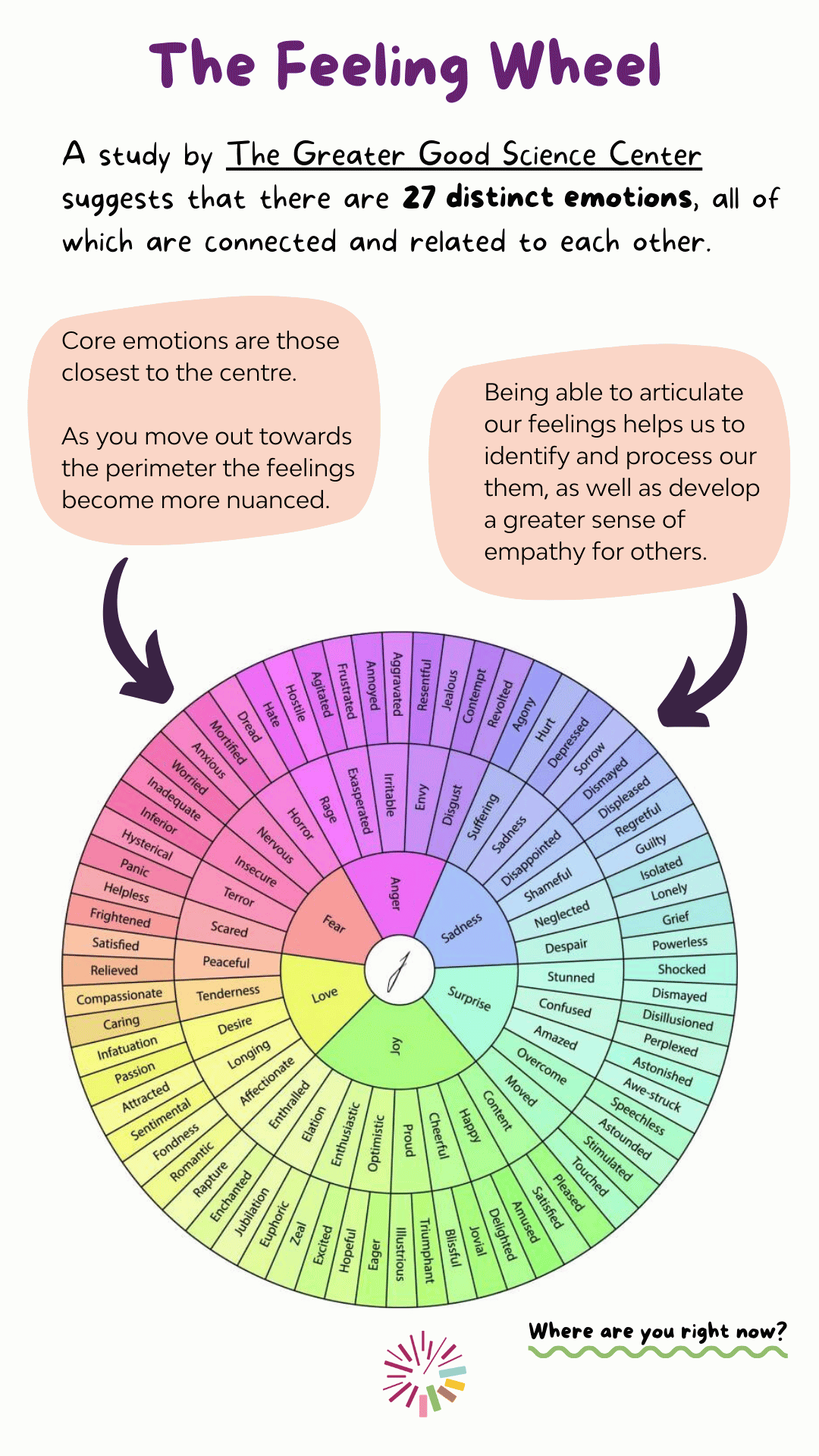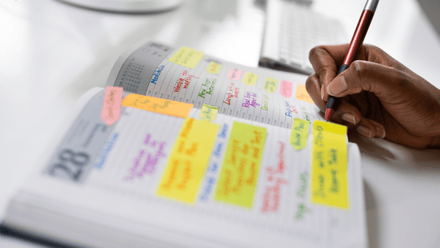The feeling wheel
Listen to this article on the go.
Can you guess how many emotions we can experience?
A study by The Greater Good Science Center suggests that there are 27 distinct emotions, all of which are connected and related to each other.
With so many emotions it's hardly surprising that we sometimes have trouble navigating them without getting lost.
One good starting point is to develop your emotional vocabulary so that you can name your emotions. Being able to articulate our feelings helps us to identify and process our emotions with others and develop a greater sense of empathy for others when they are feelings things too. We tend to think only about the big emotions: joy, sadness, anger, love... But there are whole families of emotions that can be used to describe more subtle feelings.
Think, for example, about different ways in which you might feel joyful. Are you feeling contented, elated, cheerful, at peace? And rather than saying ‘sad’, what is the quality of that sadness? Are you feeling despair, disappointed or shame? Being able to express and name emotions helps you deal with them and also talk to others about them.
The feeling wheel
One way of doing this is by using the feeling wheel to help you to identify and label your emotions and feelings.
Core emotions are those closest to the centre – as you move out towards the perimeter the feelings become more nuanced. Where are you right now? Take a look at the rings either side of the emotion you have named and decide whether these are also a good fit. Use the wheel to practise talking about different emotions with other people.
At the end of each day for the next week, use the wheel to reflect on strong emotions you have had that day.







